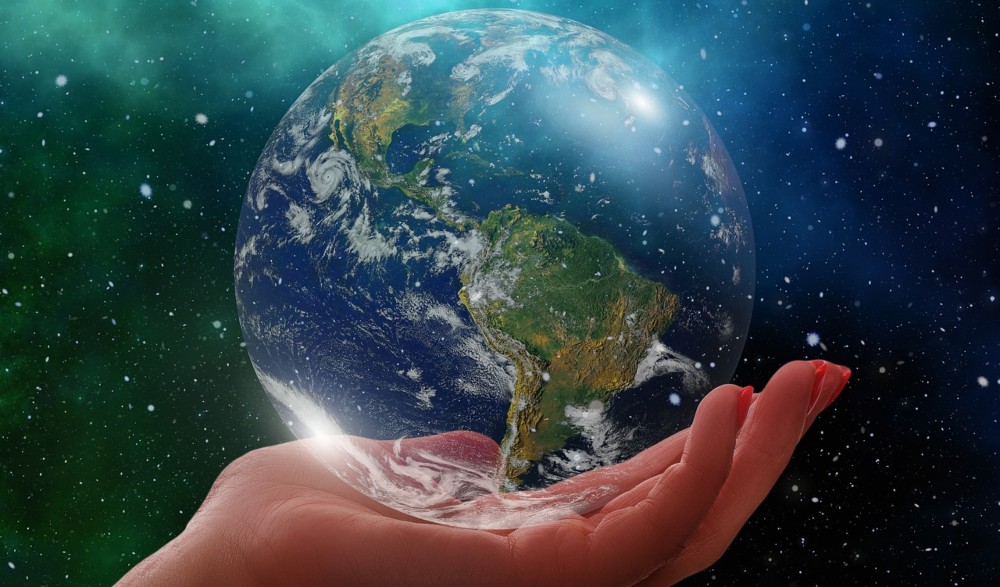The fourth book in my book group’s Climate Change series was Saving Us: A Climate Scientist’s Case for Hope and Healing In A Divided World by Katherine Hayhoe. I had been a bit apprehensive about participating in this series because my previous attention to the issue had so often left me only overwhelmed and discouraged.

While Hayhoe is clear about the dangers of a warming planet she achieves what her subtitle promises, offering hope and healing in a divided world. Based on her own experience of addressing diverse, sometimes antagonistic audiences and climate change skeptics, she devotes a lot of her book to how to talk fruitfully about the issue. In fact, her wisdom on engaging in difficult conversations can be easily transferred and adapted to all sorts of topics in our polarized society.
She lays out the basics of our challenge clearly and simply. Fossil fuel extraction and burning has had many positive results for humanity, but with a downside that increases with each passing day. The atmospheric blanket around our planet is too heavy. It’s like having too many quilts on your bed. You get hot. You don’t sleep well. If you don’t sleep well on a continuing basis, you get sick. So we’ve been putting lots of carbon into earth’s atmosphere and have made ourselves too hot, with widespread consequences for our health and that of all living things.
While she tells you a lot about what you can do as an individual, including telling you exactly what she is doing, she is also clear that its not just a matter of individual action. There’s a system problem. The system is how we get energy, our reliance on fossil fuel and the grip on us all of the eight big corporations that account for most of the production and distribution of this energy. Individual steps — reducing your carbon footprint — are important, but the energy system has to change.
Hayhoe reports on a number of innovative steps — new technologies as well as strategies cities like Chicago are implementing — to reduce emissions and avoid the most catastrophic impacts on the climate. Hearing these stories, as well as hearing the accounts of related political action, makes it clear that we don’t have to conclude “we’re doomed” and “that there’s nothing we can do.”
That said, for these new technologies and innovations to have a fighting chance we need to have some version of a carbon tax. Right now fossil fuel producers aren’t bearing the true costs of this energy system. The costs to humanity and the environment are being passed on, rather than factored in. It’s as if I lived my life, consuming this and that and simply threw all the trash in the street, where it made a mess and was a hazard for everyone, but I had no responsibility or cost for the clean-up.
The challenge to changing our energy system is daunting, but not impossible. Each of Hayhoe’s chapters has a couple introductory quotes. One from Katherine Wilkinson’s “Ted Talk,” reframes the issues in a way I found powerful. “It is a magnificent thing to be alive in a moment that matters so much.” That strikes me as a great, and faithful, way to frame it.
Which leads to another aspect of Hayhoe’s book . . . she is up front about being a Christian and about how her faith motivates her work. That said, she doesn’t go into a lot of biblical material or overt theological reflection — perhaps she does that elsewhere.
She does make clear that she is a person of faith, specifically, Christian faith. Part of the implication of this is stewardship of “the only planet we’ve got,” a phrase she reiterates. Following Jesus also leads to a concern — love — for those most vulnerable to the impacts of our heavy blanket.
If wealth insulates some from climate change, at least for a time, others don’t have that luxury. Hayhoe’s faith leads her to a concern for the poor and vulnerable. She brings these concerns to the attention of other Christians who may not see the implications of their faith in the same way.
I left Hayhoe’s book and our discussion of it with my own to-do list. I want to talk with those who manage our assets about the movement to divest from fossil fuel corporations. I will ask our condo board to look at putting solar power on our rooftop. I want to see if there is an active chapter of the effective Citizens Climate Lobby in Northeastern Oregon where I live a third of the time. I will continue to plant trees. I will see if there is support from the City of Seattle and our condo association for planting trees in the parking strip outside our building.
One more . . . I will heed Hayhoe’s admonition to “talk about it.” We sometimes dismiss the latter with phrases like “talk is cheap.” Hayhoe argues otherwise. In building awareness and an impetus for change of our energy system, talk is important. As noted, she provides many insights and suggestions for productive talk. She’s also clear that there is a time, or audience, for “not wasting your breath.” For about 7 percent of the population — the dismissives — talk is truly useless. If that is a noisy bunch, it is also a small number. Don’t get overwhelmed by the hard-core dismissives. Focus on the 93%.
Discover more from Post Alley
Subscribe to get the latest posts sent to your email.

To be able to talk about climate change persuasively requires that one learn about climate change. The curriculum at WakeUpWorld dot earth provides a basic understanding grounded in climate science.